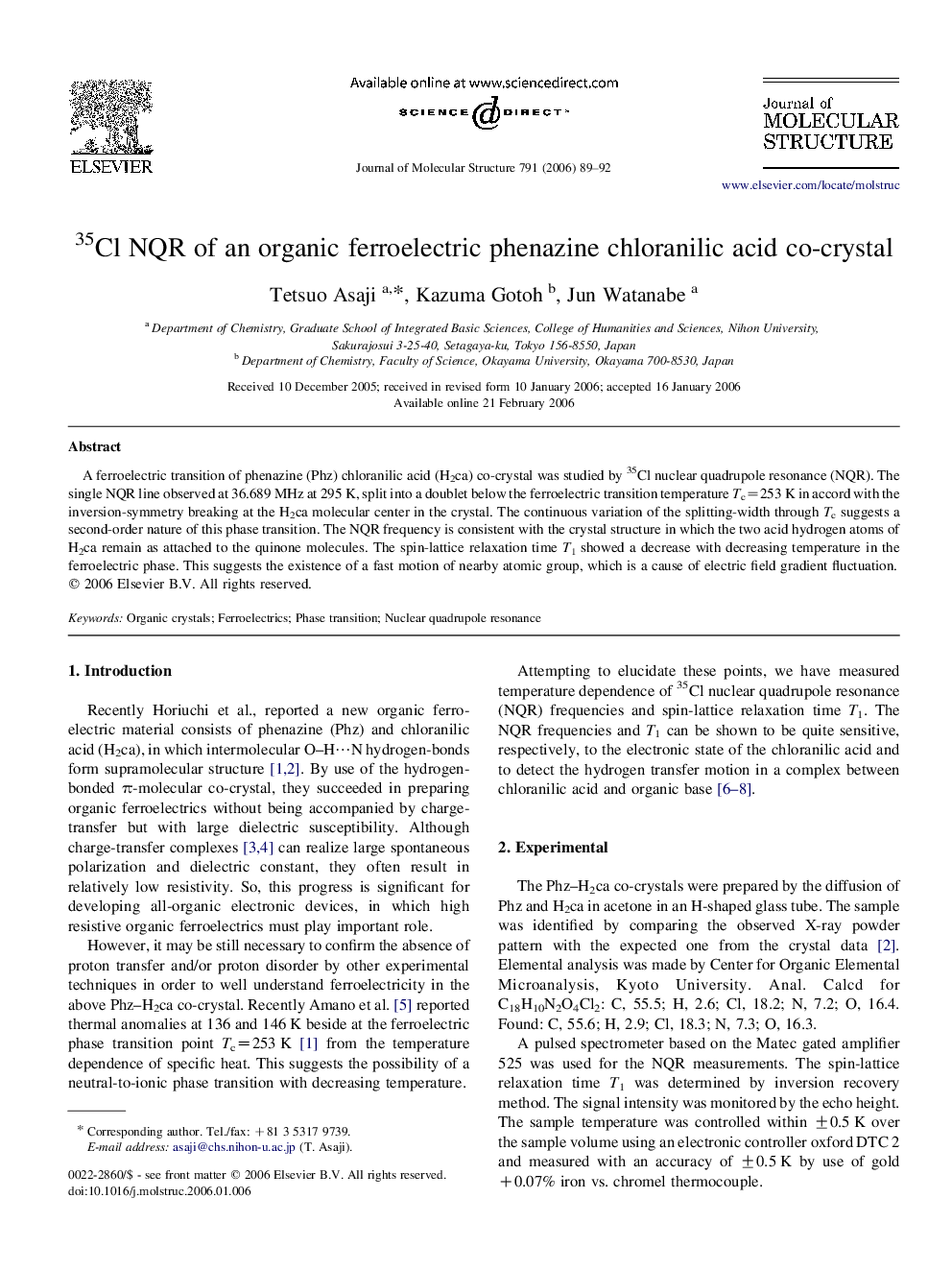| Article ID | Journal | Published Year | Pages | File Type |
|---|---|---|---|---|
| 1404647 | Journal of Molecular Structure | 2006 | 4 Pages |
A ferroelectric transition of phenazine (Phz) chloranilic acid (H2ca) co-crystal was studied by 35Cl nuclear quadrupole resonance (NQR). The single NQR line observed at 36.689 MHz at 295 K, split into a doublet below the ferroelectric transition temperature Tc=253 K in accord with the inversion-symmetry breaking at the H2ca molecular center in the crystal. The continuous variation of the splitting-width through Tc suggests a second-order nature of this phase transition. The NQR frequency is consistent with the crystal structure in which the two acid hydrogen atoms of H2ca remain as attached to the quinone molecules. The spin-lattice relaxation time T1 showed a decrease with decreasing temperature in the ferroelectric phase. This suggests the existence of a fast motion of nearby atomic group, which is a cause of electric field gradient fluctuation.
